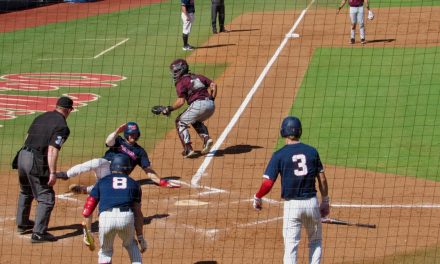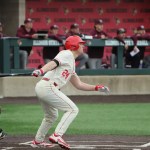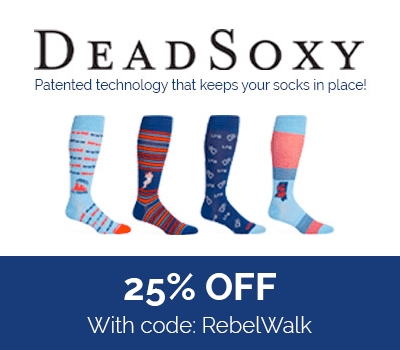OXFORD, Miss. — A few years ago, NIL (Name, Image, Likeness) changed the landscape of college sports. For the first time, compensating student-athletes for their name, image, and likeness was commonplace. From there, Pandora’s box of college athletics opened, leaving as many questions as it did answers. A class action lawsuit now sets the scene to rock college sports again.
We recently sat down with Walker Jones, Executive Director of The Grove Collective, to gain insight into what lies ahead for university athletic programs, collectives, and student-athletes.
How It All Began: The Legal Timeline
The entire story of what has transpired legally over the last few years is lengthy and detailed. As an overview, in June 2020, two former student-athlete plaintiffs, Grant House and Sedona Price, filed a complaint against the NCAA and five major conferences: the ACC, Big Ten, Big 12, Pac-12, and SEC.
The complaint asserted that the organizations’ rules prevented college athletes from receiving compensation in exchange for using their name, image, and likeness (NIL). The lawsuit also asserted athletes were not receiving their fair share of the generated revenue colleges receive from media and other deals.
A subsequent lawsuit by former student-athlete Tymir Oliver challenged the NCAA’s NIL restrictions. Another lawsuit, brought by Sedona Price and two individuals, DeWayne Carter and Nya Harrison, who were current student-athletes at the time, challenged the NCAA’s rules preventing payment for athletic services, asserting that the restrictions violated antitrust laws. The lawsuits were eventually consolidated into In re College Athlete NIL Litig., No. 4:20-CV-03919(N.D. CAL.)
Understanding the Proposed Settlement Classes
Events and negotiations led to the April 7, 2025, hearing before US District Court Judge Claudia Wilken. In July 2024, the plaintiffs filed a motion for Preliminary Settlement Approval which, on April 7th, Judge Wilken heard arguments from both sides. The proposed settlement called for there to be “Settlement Classes.”
Settlement Declaratory and Injunctive Relief Class – “all student-athletes who compete on, competed on, or will compete on a Division I athletic team between June 15, 2020, through the end of the Injunctive Settlement Relief Term (10 academic years from the date of final approval of the settlement).”
Settlement Football and Men’s Basketball Class – “all student-athletes who will receive full GIA (Grant-In-Aid) scholarships and compete on, competed on, or will compete on a Division I men’s basketball team or an FBS football team, at a college or university that is a member of one of the Five Power Conferences (including Notre Dame) and who have been or will be declared eligible for competition in Division I at any time from June 15, 2016 through September 15, 2024.”
Settlement Women’s Basketball Class – “all student-athletes who have received or will receive full GIA scholarships and compete on, competed on, or will compete on a Division I women’s basketball team at a college or university that is a member of one of the Power Five Conferences (including Notre Dame), and who have been or will be declared initially eligible for competition in Division I at any time from June 15, 2016 through September 15, 2024.”
Settlement Additional Sports Class – “all student-athletes who compete on, competed on, or will compete on a Division I athletic team and who have been or will be declared initially eligible for competition in Division I at any time from June 15, 2016 through September 15, 2024.” This class excludes, “members of the Football Men’s Basketball Class and members of the Women’s Basketball Class.”
Billions at Stake: The Money Behind the Movement
The proposed settlement would release the NCAA and conferences from the claims against them in exchange for monetary and injunctive relief.
The relief explanations are lengthy, but the noteworthy portion, which has garnered the most attention to date, is that the monetary relief includes paying $2.576 billion to the Settlement Damages Classes, $1.976 billion of which being held in an NIL Settlement Fund and the remaining $600 million being kept in an Additional Compensation Settlement Fund. These monetary distributions provide monetary relief to the athletic services claims.
The Salary Cap and Roster Limits
The injunctive-relief portion of the settlement states that during a ten-year settlement term, NCAA Division I schools can provide directly to student-athletes benefits worth up to 22 percent of the Power Five Conference Schools’ average athletic revenue each year. This is known as the “salary cap rule.” The benefits above supplement the existing benefits the NCAA already permits, including scholarships.
There have been many details to consider, including walk-on student-athletes, roster limitations, and the settlement’s ramifications for future athletes, all of which are known concerns of Judge Wilken.
At the April 7th hearing, lawyers for both sides appealed to Judge Wilken to rule in favor of the settlement, citing the years of work that had gone into reaching it. As it stands now, $2.75 billion is set to be distributed to players who played before 2021, the year the NCAA allowed athletes to benefit from NIL. The amount earned is based on the sport played and whether the athlete played for a school in a major conference.
Significant changes come into play in the future ramifications of college sports. Schools in the Power Conferences named in the lawsuit, as well as any school that chooses to opt in to the settlement, will be allowed to share revenue with their student-athletes.
The settlement also sets a salary cap of approximately $20.5 million, increasing to roughly $30 million over the settlement period. The settlement imposes roster limits in place of scholarship limits. More scholarships may be offered, but some team rosters will be smaller. University athletic programs will have up to $20.5 million to spend on player recruitment.
The catch is that an NIL deal worth over $600 or more will have to go through a clearinghouse operated by Deloitte, one of the “Big Four” accounting firms. Deloitte aims to ensure the NIL deal is of fair market value. This process ensures that a university isn’t trying to circumvent the $20.5 million salary cap.
Essentially, universities will be similar to sports franchises and have to figure out how best to run their operations to compensate athletes across all sports.
Walker Jones Weighs in on Uncertainty Ahead
The ramifications of the House vs. NCAA lawsuit and its combined lawsuits have far-reaching implications for everyone involved in college athletics. Just when there seemed to be a semblance of continuity in NIL, the ruling for this case will reshape the landscape of NIL once again. When we sat down with Walker Jones, he offered his insight into what comes next.
First of all, we asked Jones about the ramifications of the House vs. NCAA settlement on collectives.
“Unfortunately, there’s still not a lot of clarity. The judge had the final hearing and did not issue a verdict. She pushed back on several concepts included in the settlement, most notably roster limits and tying future athletes to the settlement for 10 years. Those were two of the main things that she expressed concern over. I think they have to work through that and see if they can get her to a good place in ultimately approving the settlement.
“We’re just in a kind of no-man’s land right now, trying to wait and see what happens, but planning for every possible contingency that could come our way. What we do know is that The Grove Collective and our marketing group, Magnolia Sports Group, will still be around whether the settlement gets approved or not. There’ll be a role for us to play. It’ll look different and execute a little differently due to some aspects of the settlement. But, the need for us to provide NIL opportunities for our student-athletes outside of the university will still be there.”
Walker Jones
What the Settlement Means for Ole Miss Fans and Collectives
Concerning fans giving financially to support Ole Miss athletics, Jones related, “But whether the settlement gets approved or not, we know fundraising is going to be really important, both for the university and the athletic foundation, and with the collective. And we’re working hand in hand with Keith Carter (Vice Chancellor for Intercollegiate Athletics) Denson Hollis (Senior Associate A. D. for Development), Matt McLaughlin (Senior Associate A. D. for Strategy and Management Cap), Chancellor Glenn Boyce, and everybody at the university to make sure that people are not confused. So fans understand where to give, and why to give. We want to make sure that whatever contingency comes our way, we have a good plan for it. We’re looking forward to operating efficiently, just as we have been up to this point.”
The Push for Equity—And the Reality of Imbalance
Theoretically, a revenue-sharing cap should level the playing field in college athletics, and in some respects, it does. Schools that others have outspent will now be put in a better position because schools will be brought closer together in terms of what they can spend on particular sports.
Jones commented on the issue by telling us, “I think there will be some competitive balance that will come back with the settlement. But there’ll also be some inequity, too. Schools that don’t have football, like Marquette, DePaul, Seton Hall, and St. John’s, won’t have to share revenue from football. So, they can allocate all that money to their basketball programs. There’ll still be some inequities out there, and certain schools will choose to distribute their money a little differently.”
Fans hoping the lawsuit will provide a quick fix to the problems NIL brought to college sports won’t find all their answers in the settlement.
As Jones explained, “As I’ve told everybody with the settlement, it’ll solve several systemic issues that we’re dealing with, but it will not fix all of them. And anybody who thinks the settlement is going to be the magic bullet to create this utopian society of NIL is probably a little naive. So, do I think there will be a little bit of a balance? Yes. Will it help address some of the systemic issues we’re seeing? It won’t fix all of them.”
With revenue sharing playing a more significant role in major sports that generate significant monetary income, we wondered if The Grove Collective would need to focus more on providing NIL opportunities to athletes in other sports.
Jones explained that The Grove Collective will remain focused on its plan to provide as many opportunities as possible to all Ole Miss student-athletes.
“Our mission will still live with the drive to give every one of our athletes a platform and NIL if they so choose to participate in it,” Jones said. “To your question, we may be able to make a bigger impact with some of the non-revenue Olympic sports that aren’t going to get revenue sharing. One thing that people kind of forget about is that not every sport will receive revenue sharing. You know, there are 18 sports at Ole Miss, and Keith and the administration may choose not to share revenue among all 18 sports. So, for those sports that don’t get it, we may be able to make a bigger impact by providing them with some additional funding and support that other sports receive through the mandated revenue share.”
Jones explained further about revenue sharing by saying, “But we’ll still be busy with football. We’ll still be busy with basketball, baseball, and those kinds of big four sports. There will still be a need for us to work with them and interact with the student-athletes. They’re going to be getting a large share of that revenue. When we talk about impact and helping our coaches retain and recruit the best talent, you’ll see us being active down the line with all our sports because of that.”
Will the Clearinghouse Create More Problems Than It Solves?
The settlement calls for any NIL amount $600 or more to be reviewed by the clearinghouse oversight run by Deloitte. It seems this procedure would slow down the NIL process.
We asked Jones to comment on whether this may be the case. “We’ve got to wait and see,” Jones began.
“I think it sounds good in theory, but it’s going to be really hard to execute a clearinghouse to cap third-party NIL money. I believe that the environment is ripe for litigation. Athletes and agents are going to figure out pretty quickly that there is a restraint on some of that third-party NIL money. And they’re going to challenge it probably. Litigation is the change agent in today’s world. So, how effective can the clearinghouse be? It’s anybody’s guess. I think it’s a noble effort. And I know why they’re doing it. If they’re going to share revenue with athletes to the tune of what they’re going to allow, then there must be some controls on the money somewhere. I understand why it’s there. But I think the execution and the reality of trying to constrain that free market is going to be challenging.”
Walker Jones
Through the clearinghouse process, Deloitte will determine the fair market value of an athlete to evaluate the NIL deal. How will Deloitte determine fair market value? That is a question for Deloitte to answer.
To illustrate a situation where a student-athlete’s fair market value changed overnight, Jones offers an example. “Just thinking back to my time when I was at Under Armour, an athlete is worth what you’re willing to pay him. Sometimes it doesn’t make a ton of sense to the outside world. I think it’s tough to determine the true fair market value of an athlete. I use the example of Diego Pavia, the quarterback at Vanderbilt last year. Nobody knew who he was in August. Two months later, he beats the number one team in the country, Alabama, and he’s all over SportsCenter and all over social media. His fair market value in the course of 60 days went from here to here. So, you need a mechanism to account for the changing dynamics that drive fair market value. We all know that an athlete’s performance in games and on the playing field or playing surface directly dictates what they’re worth to a brand. I understand the effort to do it. I think it’s going to be really challenging. It’s going to have to evolve. It’s going to have to adapt. There’s going to be litigation. How effective is it going to be at policing this? I’m not sure. We at The Grove Collective are working on creating a bunch of activations and obligations with our athletes, with our corporate sponsors, so we can put our best foot forward and try to justify as much as possible.”
On Culture, Compensation, and the Portal
Recently, Vols’ quarterback Nico Iamaleava entered the transfer portal, leaving the University of Tennessee due to his displeasure with his NIL compensation. The situation left many wondering what had happened to the world of sports when a college athlete could issue demands to remain on a team, potentially sparking a bidding war between schools.
Jones was recently seen in a video remarking that The Grove Collective would not get in a check-writing war and how the culture of Ole Miss sports is attractive and speaks for itself. We asked him to comment on the above topics.
To the point of Iamaleava leaving Tennessee, Jones replied, “That’s an unfortunate situation for everybody. It’s unfortunate for Tennessee. It’s unfortunate for the kid, I believe, and really kind of the landscape of college football. It remains to be seen where he lands and what he’ll end up being compensated for. How does that impact the portal? Well, it could be a cautionary tale to athletes and agents out there to be careful. You know, the grass isn’t always greener, and there isn’t always a bag of money out there that you think just exists…. It could have an impact of slowing things down a little bit, again, as a cautionary tale, or he could walk into a great situation, and then it fuels more kids or more players to do what he did.”
Jones then commented on his remark about The Grove Collective saying, “My point in what I said the other day is we want to have great culture here… Adults make decisions about money every day in the professional space. We can’t begrudge these student-athletes for doing the same thing that adults are doing. But what we try to tell people is, look, you’ve got to look at everything in totality. All the other advantages of being a student-athlete at the University of Mississippi, living in Oxford, Mississippi, all the support that the university gives them, the athletic department, and you’ve got to weigh all those things. So again, I just think that when I make those statements, I’m not saying that we’re not going to pay athletes at a very competitive level, because we are. I’m not being naive. I’m not being hypocritical. Are we offering competitive compensation to our athletes? Absolutely, we are. But we also have to understand that if we do get into a conversation about who can write the biggest check, we can’t afford to be in that conversation as much as some of our other competitors. We have to focus on being efficient with our money and doing all the other little things around our athletes that where the main focus isn’t on the compensation, but on the development, the growth, and the style of playing the system. Our coaches, I think, do a great job of that.”
Are Student-Athletes Still Just Students?
To some, college athletics has become a minor league, rather than an amateur league, which begs the question of whether student-athletes should be called employees. If not employees, then what should they be called, because they aren’t simply student-athletes anymore?
From the perspective of a former athlete, we asked Jones to share his thoughts on the subject. “I think the big question of all this is, at some point, we’re gonna have to find out what these athletes are. Are they employees? Are they not? Or is there some hybrid status to designate what they are? I think the money has gotten substantial. In many cases, they’re earning more money than they would if they went to the NBA, NFL, or Major League Baseball. We’re certainly paying them like pro athletes. That’s where we have to address some of the systemic problems, I don’t think they will get fixed until we identify what they are. We have to treat them as such. A lot of the problems we have now, all our professional sports leagues got away from those problems because they created a collectively bargained environment, unionization, and standardized contracts, rules, and regulations that have to be followed, and the revenue sharing that comes with it. If you want this compensation, you have to sign up with some guidelines, because there have to be rules. There have to be some guidelines in a free market, or otherwise, it’s not sustainable… We’ve got smart people in college athletics, and I know we can figure it out. How do we balance providing educational opportunities and competitive opportunities? There has to be a middle ground in there.”
Congress, Codification, and the Road Ahead
The settlement’s impact will have repercussions for many years. Will Judge Wilken agree to the settlement terms the parties have agreed upon? If so, will the Congress of the United States grant the requests of the NCAA and the athletic conferences to pass legislation setting the settlement as the end of litigation of NIL and other topics?
Jones gave us his thoughts on the subject by saying, “This is where you’re seeing the commissioners, a lot of the athletic directors and school presidents in D.C. meeting with Congress. One of the things they’re talking about is how to create some sort of safe harbor or antitrust exemption for the settlement that would end the litigation, because you’re settling this to try to put a stop to the constant lawsuits and the litigation. If you don’t figure out a way to codify rules that create a safe harbor or an antitrust exemption, litigation is going to continue. That’s where when you hear schools or university presidents or conference commissioners or the NCAA say, ‘Hey, we really need this protection from Congress to codify the settlement,’ what they’re saying is we need protection that there’s not just going to be another round of litigation after we pass this settlement, because if we’re not careful, the settlement gets passed, gets approved, the schools are on the hook for $20.5 million in year one of revenue sharing, and litigation continues. Then you enter a world much worse than where we were, where you’re now on the hook for $20.5 million, and you don’t have any protection. Litigation is still going to come fast and furious. That’s the world that we can’t end up in, in all of this. But as we can all see in Washington, DC, it’s a very polarized and partisan world right now. There isn’t much that anyone agrees on, whether it’s the debt ceiling, a tax bill, tariffs, or whatever. NIL in college, I think it isn’t going to be a major priority in such a divided legal environment on Capitol Hill. I just think that that’s the tricky part, and that’s the thing, that’s the contingency nobody knows is when Congress is going to actually have an appetite to work across the aisle and have a bipartisan bill that protects from future litigation. I think it’s a long way off, in my opinion.”
‘Adapt or Die:’ A Final Message to Fans
Whatever the outcome of the settlement, college athletics are headed for another period of upheaval and change. The question is how fans support their school and its athletics programs through the tumultuous period of change.
The Grove Collective remains an excellent source for fans to choose from when deciding how to support Ole Miss athletics. We asked Jones to tell fans what he would like them to know about giving to The Grove Collective.
His message to fans is this:
“I think we’ve hopefully built a lot of trust with them these last four years that we’re going to put their money to great use and be impactful with it. We launched a new bourbon line last month, and we’re now selling it. Who knows, we may be selling bottled water next week. We’re literally trying a little bit of everything and being very creative, trying to create incremental revenue streams wherever we can. The school has been incredibly supportive, as always. Keith and the whole staff over there, along with Chancellor Boyce, continue to give us many opportunities to increase our revenue. The big message to our fans is that, regardless of all the noise out there and all the possible contingencies, settlements, lawsuits, and other things, we’re still going to be here. There will still be a need for you to support us. We have a giving level for literally anyone and everybody, based on their comfort level. We need them to continue to support us. We sit here today with a football team that has won 21 games over the last two years, a men’s and women’s basketball team that both made the Sweet 16. We’ve got a great baseball team. We’ve got incredible support in our Olympic sports right now. I think people should see that it’s working and recognize it as a worthy investment for their support. Any dollar figure; we have everything starting from $10 a month, and you can make one-time donations. We will always worry about and focus on the little things. There’s no dollar figure too small. All of it helps. The crowdfunding idea we came up with has helped us generate sustained monthly revenue and run our business. People can go to our website, and they can find any sort of giving level that would be comfortable for them. We’ve shown the ability to be flexible, nimble, creative, and adjust as needed. It’s like the line from Brad Pitt’s line in Moneyball, ‘Adapt or die.’ We’re going to continue adapting and just need our fans to continue supporting us.”
It’s a precarious position indeed for those involved in college athletics. Will the rules be the same tomorrow as they were today? What lawsuit will be filed next? Are players staying or entering the portal if they don’t like their NIL deal? What happens to athletic programs if athletic departments begin running in a deficit?
All of these questions remind us that one lawsuit years ago led to the NCAA allowing name, image, and likeness (NIL) deals, which changed college sports forever. As we ponder the new landscape, how should we view revenue sharing? To all fans out there who love college sports, there is no real solution around the corner. The best fans can hope for is that clear minds will prevail.
Like this:
Like Loading...
Related
Donna Sprabery
Donna Sprabery is a former teacher, graduation coach, and academic coach for boys basketball. She graduated from the University of West Alabama with a major in business education and from Arkansas State University with a MA in Educational Leadership. A native of Meridian, MS, Donna enjoys traveling, gardening, writing, volunteer work, and cheering on the Rebels.





















